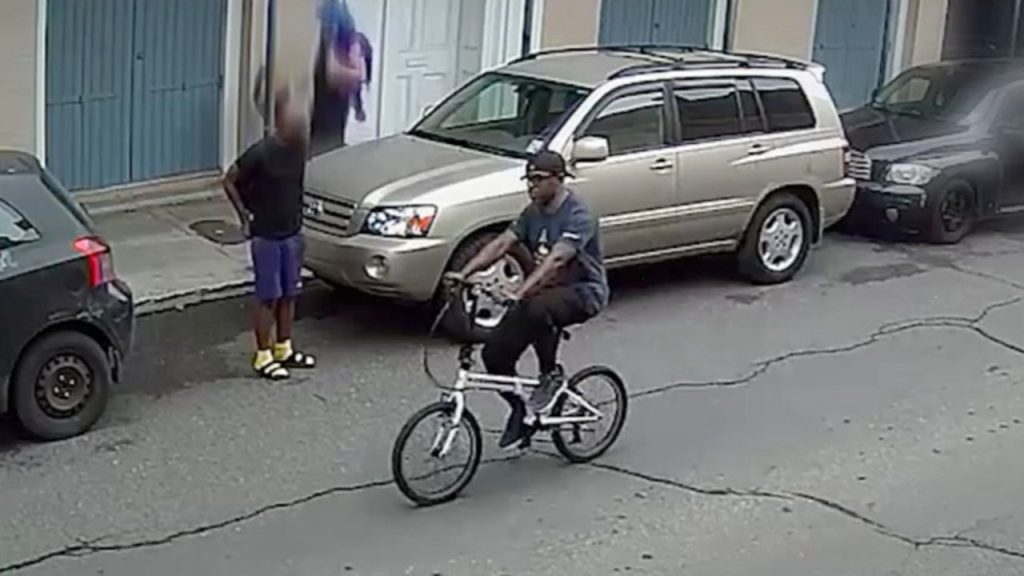The FBI’s investigation into the New Year’s Day terrorist attack on Bourbon Street in New Orleans has unveiled a chilling narrative of premeditation and reconnaissance by the perpetrator, Shamsud-Din Jabbar. A newly released photograph places Jabbar in the French Quarter on Halloween 2023, riding a bicycle and potentially wearing Meta smart glasses, suggesting he was conducting surveillance for his planned attack. This image, coupled with evidence of prior visits to the city in October and November, paints a picture of a meticulously planned assault aimed at maximizing casualties during a period of heightened pedestrian activity. The fact that he chose Halloween, another holiday known for large crowds, for a scouting mission underscores his deliberate targeting of vulnerable civilians. Authorities are appealing to the public for any information regarding Jabbar’s movements during these reconnaissance trips, particularly between 2 and 6 p.m. on October 31st, the day the Halloween photograph was taken. This information could provide crucial insights into Jabbar’s planning process and potential accomplices.
Jabbar’s actions leading up to the attack reveal a disturbing trajectory of radicalization and meticulous planning. His 110-day trip to Egypt in 2023 raises questions about potential connections or influences he may have encountered during his time abroad. The FBI has confirmed that Jabbar utilized Meta smart glasses to record videos along Bourbon Street during his October and November visits, further solidifying the notion of pre-attack surveillance. His actions demonstrate a calculated approach, using technology to familiarize himself with the target area and potentially identify optimal locations for carrying out his deadly plan. The combination of international travel, technological surveillance, and overt expressions of allegiance to ISIS paints a disturbing picture of an individual deeply committed to his extremist ideology.
The attack itself unfolded with brutal efficiency. Jabbar rented a Ford F-150 EV in Houston and drove to Louisiana, documenting his journey with Facebook videos proclaiming his loyalty to ISIS. Upon arrival in New Orleans, he planted two coolers containing improvised explosive devices (IEDs), which thankfully failed to detonate. In the early hours of January 1st, he circumvented a parked police vehicle and proceeded to drive his rented truck into the crowd of New Year’s Eve revelers on Bourbon Street. The attack resulted in the deaths of 14 people and injuries to more than 30 others. The high speed and deliberate nature of the attack, captured on video, highlight the horrific scene of panicked revelers fleeing for their lives.
The aftermath of the attack uncovered further evidence of Jabbar’s extremist motivations. An Islamic State group flag was found inside his truck, alongside at least three cellphones. These discoveries confirm the ideological underpinnings of the attack and provide crucial clues for investigators piecing together the timeline of events and potential connections to wider terrorist networks. The fact that the IEDs did not detonate raises questions about their construction and potential malfunction, but also underscores the even greater potential for carnage had they functioned as intended. The recovery of multiple cellphones suggests potential communication with others or the existence of further digital evidence related to the attack.
The FBI’s ongoing investigation seeks to understand the full scope of Jabbar’s planning and any potential support network he may have had. The public appeal for information, particularly regarding his presence in the French Quarter on Halloween, is crucial for filling in the gaps and gaining a more complete understanding of his movements and intentions. The discovery of the Halloween photograph depicting Jabbar potentially wearing Meta smart glasses adds a significant layer to the investigation, highlighting the use of technology in planning and potentially documenting the reconnaissance missions. The request for photos and videos from the public could provide valuable contextual information and potentially identify individuals who interacted with Jabbar or witnessed his activities.
The New Orleans attack serves as a stark reminder of the persistent threat of terrorism and the importance of vigilance and community cooperation in preventing such tragedies. The combination of online radicalization, international travel, and meticulous planning underscores the complex challenges faced by law enforcement in countering these threats. The FBI’s continued investigation into Jabbar’s background, motivations, and potential connections is vital for understanding the full scope of this tragic event and preventing future attacks. The public’s assistance in providing information, however seemingly insignificant, can play a crucial role in piecing together the puzzle and bringing closure to the victims and their families.

